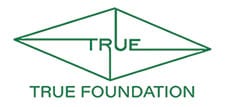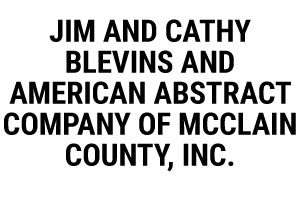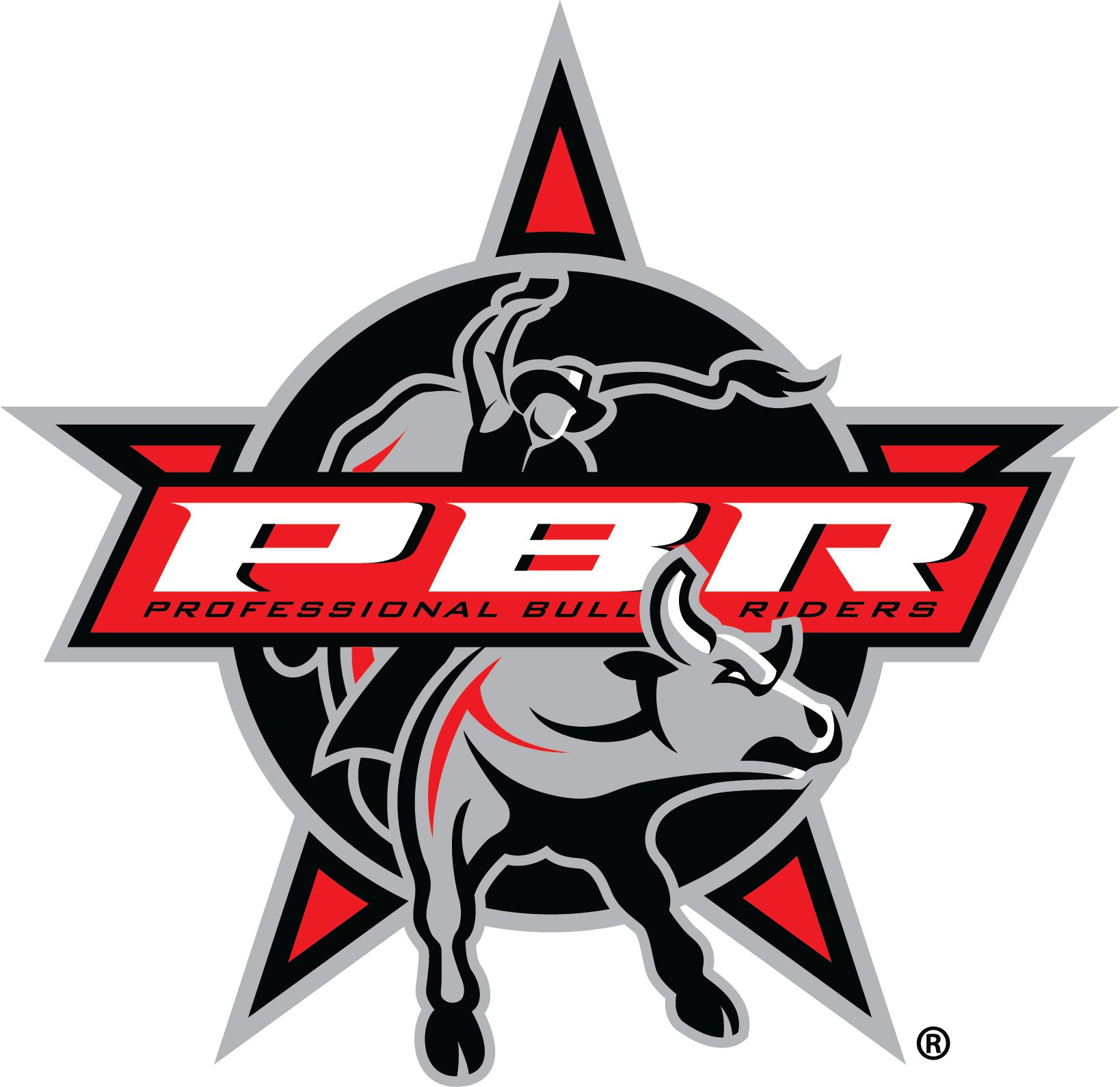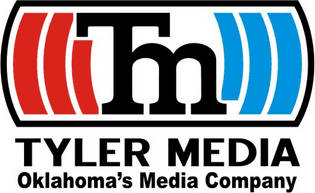
Glenn D. Shirley (1916-2002) is known as one of the foremost historical writers about the American West. Working in law enforcement from 1936-1969, he combined his interests in the law and Western history in his many published works which include such titles as Law West of Fort Smith: A History of Frontier Justice in the Indian Territory, 1834-1896 (1957), Heck Thomas, Frontier Marshal: The Story of a Real Gunfighter (1962), Henry Starr: Last of the Real Badmen (1965), Temple Houston, Lawyer with a Gun (1980) and Marauders of the Indian Nations: The Bill Cook Gang and Cherokee Bill (1994).
Shirley once commented, “Studying law taught me mainly where and how to find the law, how to do research and find the facts.” Often focusing his biographical works on outlaws and lawmen, he sought to separate facts from fiction through extensive use of original documents such as court records, government documents and contemporary newspapers.
When Shirley began writing, he also began collecting–a pursuit that eventually led to the purchase of a second home for use as an archive/library work space. Once filling a four bedroom house to the brim, this collection includes over 6,400 books, more than 2,900 Western pulp novels, over 1,900 pulp fiction issues, more than 2,600 pieces of sheet music, over 3,200 dime novels and weeklies, greater than 16,800 photographs and negatives and in excess of 10,700 movie posters, lobby cards and inserts.
Numerous research files, meticulously organized in 30 file cabinets, contain information on a multitude of subjects, including law enforcement in the West, general Western history, Oklahoma history and Western historical figures. Interestingly, Shirley paid ample attention to both factual and popularized visions of the West in his collecting. This exhibit presents the debut of the Glenn D. Shirley Western Americana Collection in conjunction with a behind the scenes look at the museum’s collection process.
From there to here
The acquisition of such a large and diverse collection requires many hours of planning and preparation. Work began when the collection was first viewed and videotaped in fall of 2005. More detailed work followed in the spring of 2006, when an exhaustive inventory was compiled. From the inventory, the needs for packing were determined and supplies purchased. Several more weeks were spent packing, an effort which yielded nearly 400 boxes. In a collective effort by museum staff, these materials were secured to pallets and transported to the museum in moving trucks over the course of two days.
Work is just beginning here at the museum. Objects are being systematically unpacked and treated in a carbon dioxide chamber to ensure they are pest free. Following treatment, items will be cataloged and paper materials re-housed in acid free, archival quality containers. Researchers will soon gain access to a newfound wealth of information as processing continues and visitors can expect the appearance of a myriad of rare and interesting artifacts in gallery exhibits.
The Fantastic True Story of Belle Starr

The Glenn D. Shirley Western Americana Collection is most unique for its inclusion of a wide range of materials. Shirley wrote two books on Western outlaw Belle Starr. These tomes are entitled Belle Starr, Outlaw Queen: The Fantastic True Story of Belle Starr (1960) and Belle Starr and Her Times: The Literature, the Facts, and the Legends (1982). The scope of materials Shirley collected on this famous outlaw demonstrates the exceptional breadth of information found throughout the collection. It runs the gamut from fiction to non-fiction, academic to popular, historical to modern and include everything from public records and photos to newspaper clippings, histories, fictional stories, and movie materials.
Documentation confirms that Belle Starr married three times; first to Jim Reed, then to Sam Starr and finally to one of Sam’s relatives, Jim July Starr. She gave birth to two children during her marriage to Jim Reed, Rosie Lee (Pearl) and James Edwin (Eddie). Her life came to a dramatic end when she was shot dead by an unknown assassin in 1889. Starr’s list of known associates and adversaries reads like a who’s who of the old West, with the likes of the James Brothers, the Younger Brothers and Isaac C. Parker, “the hanging judge.”
Belle Starr the Bandit Queen?

Belle Starr’s last years coincided with the height of “yellow journalism,” a time when newspapers focused on drama at the expense of facts in reporting. In his book, Belle Starr and her Times, Glenn Shirley posits that the mythical Belle Starr was born of one brief, but highly inaccurate, newspaper article about Starr’s death, run in both the Dallas Morning News and in the New York Times. It is theorized that this article inspired dime novel publisher Richard K. Fox to pen and publish Belle Starr, the Bandit Queen, or the Female Jesse James. In spite of a multitude of inaccuracies, Fox’s interpretation was often used as a historical reference in books that followed.
Amid rampant misinformation, Starr’s image as a romantic Western outlaw grew to legendary proportions. Shirley writes, “Her legend so flourished…that Frederick S. Barde, one of Oklahoma’s ablest newspapermen, made an on-the-scene search in 1910 for the facts on her life and death in the Indian Territory. Barde wrote, “‘Time has thrown about her life a tinge of romance, yet those who knew her well see no glamour in what she did—she was merely a dissolute woman, unfortunate in her early life, and in her later years merely a companion of thieves and outlaws. It is doubtful if she herself ever did more than steal horses.'”
Belle in Print
In addition to historical references, Shirley collected fiction, including a number of titles based on the legend of Belle Starr. These books contain overly romanticized plots, often adorned with the face of a wild-eyed temptress that could not look less like the real Belle Starr. A blurb on the back of one reads, “Whether it was another man’s horse or another woman’s man, Belle Starr knew what she wanted and took it. Leaving lovers and enemies, lawmen and outlaws in her wake, she blazed a trail of terror and passion from Fort Smith all along the wild Indian territory called the Cherokee Strip (Belle of Fort Smith, back cover).”
Hollywood Belle

As a romantic outlaw, Belle Starr held a great deal of appeal in Hollywood and she was portrayed by various actresses in a number of films and made-for-TV-movies. It is interesting to note that in spite of her ordinary looks and modest figure, Belle Starr is portrayed in film by such screen sirens as Gene Tierney in Belle Starr (1941) and Jane Russell in Montana Belle (1952).
Her character resurfaced again in the 1980 made-for-TV-movie also titled Belle Starr, with leading lady Elizabeth Montgomery. These movies were highly fictionalized, drawing on the Starr of legend rather than fact. Renewed literary and historical interest in the character Belle Starr was sparked by the 1941 movie, which Shirley states “touched off three decades of revisionist writing.”
The movie related items seen here represent one of the most impressive portions of the Glenn D. Shirley Western Americana Collection. With over 1,200 movie posters, 8,290 photographs and 6,540 lobby cards, this collection constitutes a treasure trove of Western film history.
By and About Theodore Roosevelt: Selections From The Glenn Shirley Library

Significant within the Glenn Shirley Collection is a library of over 6,400 books, most of which relate to Western history and biography. These many volumes will serve scholars at the Museum’s Dickinson Research Center just as they served Mr. Shirley in his many publication projects.
Among the holdings in the Shirley library collection are more than sixty books treating the life of Theodore Roosevelt (1856-1919); cowboy-rancher, large-game hunter, naturalist, conservationist, soldier, politician, diplomat, and twenty-sixth president of the United States (1901-1909).
Roosevelt proved to be a prolific writer, authoring some twenty books and contributing to many others. Drawing on his experiences in the West, he wrote tellingly on hunting, conservation, natural studies and the American character. A selection of these now-quite-rare titles can be found on the bibliography page of this virtual exhibit.
Although sometimes prone to exaggeration in his writing, Roosevelt nonetheless proved to be a larger-than-life figure in American history and culture. As a result, interest in his life has produced a tide of biographical studies.
Myriad titles were written about Theodore Roosevelt during his own lifetime and in the decade following his death. Most of this work is highly laudatory, as TR’s military and political deeds were thought by many admirers to exemplify the true American character.
Author Glenn Shirley’s interest in Roosevelt’s varied and colorful career remains open to some speculation, as he never wrote or published anything specific about the man. Though a regular collector of Rooseveltiana, he apparently felt that TR, much like such larger-than-life personalities as “Buffalo Bill” Cody and George Armstrong Custer, was too exaggerated and sensationalized a character to be pursued very seriously.
Shirley’s son related that, on several occasions, his father told him that he believed history had been “very generous” to Theodore Roosevelt, perhaps particularly in its lionization of him as a military hero in the Spanish-American War. Interestingly, he shelved all his TR-related volumes not with his principal collection of history and biography, but instead in his “fiction room.”
Pawnee Bill

Though in very good condition for it’s age, this over-sized poster is a prime candidate for conservation. Upon close inspection, several tears can be seen in the body of the poster. A conservator will ultimately decide on the best way to mend tears and stabilize the poster with high quality acid-free materials, so that this one-of-a-kind artifact may be enjoyed for many years to come.
James Stewart

Shown here wearing the hat, vest and shirt he wore in The Rare Breed discussed below, James Maitland Stewart was born on May 20, 1908 in Indiana, Pennsylvania. Active in music and drama during his college years at Princeton, Stewart was an active member of the Princeton Triangle Club. He was later invited to join the University Players, a group comprised of Ivy League actors and musicians. Stewart then appeared in plays on Broadway for a brief period before moving to Hollywood to make his film debut in Murder Man(1935). His career was interrupted by World War II with his distinguished service in the Air Force. He resumed his film career after the war and retired in the early 1980s. Stewart died on July 2, 1997, in Beverly Hills, California.
He appeared in nearly 80 movies and is best remembered for characters he played in several early Frank Capra films including It’s a Wonderful Life (1946). Westerns constituted one-fourth of his filmography. Stewart’s first two Westerns were Rose Marie (1936), starring Jeanette MacDonald and Nelson Eddy and Destry Rides Again (1939), co-starring Marlene Dietrich. Other Westerns in which he appeared include Winchester ‘73 (1950), Broken Arrow (1950), Bend of the River (1952), The Naked Spur (1953), The Far Country (1955), The Man from Laramie (1955), Night Passage (1957), Two Rode Together (1961), The Man Who Shot Liberty Valance (1962), How the West Was Won (1963),Cheyenne Autumn (1964), Shenandoah (1965), The Rare Breed (1966), Firecreek (1968),Bandeloro! (1968), The Cheyenne Social Club (1970) and The Shootist (1976).
One writer commented, “He is probably the best example of an accomplished and versatile actor who, despite the overwhelming inhibition of his non-Western persona, managed to develop a successful and original image of a screen Westerner.”
The film stills below, from the Glenn D. Shirley Western Americana Collection, show James Stewart wearing the hat, shirt and vest that he wears in the oil portrait painted by Robert K. Abbett in 1975, shown above. Film stills, often referred to as scene stills by movie poster collectors, are widely used in newspaper, magazine and other printed media. They are components of press kits / campaign books as well.

Film still.
The Rare Breed.
Universal Pictures Company, 1966.
RC2006.067.2.00046
Plot Summary for The Rare Breed, 1966; 1 hr. 37 min.
When her husband dies en route from England to America, Martha Price (Maureen O’Hara) and her daughter Hilary (Juliet Mills) are left to carry out his dream: the introduction of Hereford cattle into the American West. The headstrong widow enlists Sam “Bulldog” Burnett (James Stewart) to accompany them and to escort their Hereford bull named Vindicator to a breeder, Alexander Bowen (Brian Keith), in Texas. Initially tempted to scam them out of their bull, Burnett becomes attracted to Martha. His conscience is cleared when they overcome every kind of Western calamity imaginable. When all others believe the attempt to crossbreed has failed, Burnett sets out to prove them wrong, though even he doubts the survival potential of this “rare breed.”
Loosely based on the life of a rancher named William Burgess, this 1966 movie was directed by Andrew V. McLaglen. McLaglen also directed many episodes of the television Western, Have Gun Will Travel and several movies starring John Wayne including McLintock!, The Undefeated, Chisum, andCahill U.S. Marshal.
An All Star cast includes James Stewart, Maureen O’Hara, Brian Keith, Juliet Mills, Ben Johnson, Jack Elam and Harry Carey, Jr.

Film still.
The Rare Breed.
Universal Pictures Company, 1966.
RC2006.067.2.00047
Hereford Cattle
The first Hereford breeder in the United States was congressman Henry Clay of Kentucky, who imported one bull and two cows in 1817. A more substantive breeding herd consisting of 22 purebred Herefords was brought to New York by William Henry Sotham in 1840. During the 1848-1886 period, more than 3,800 Herefords were imported from Great Britain. Then, in 1876, Capt. W. S. Ikard imported the first registered Hereford cattle into Texas.
However, it is likely the movie is based upon an 1899 event in the lives of breeder T. F. B. Sotham (William Henry’s son) and a Texas rancher named Col. C. C. Slaughter. In 1884, Slaughter began acquiring Hereford cattle. On March 1, 1899, the climax of these acquisitions came at Sotham’s Chillicothe, Missouri, auction where Slaughter paid an unheard of $5,000 for the Hereford bull, Sir Bredwell, which was declared the grand champion at the Omaha Trans-Mississippi and International Exposition the year before. Sotham personally delivered the bull and, according to reports at the time, “the trip involved ‘800 miles by rail and 80 miles on foot.’ ”
In light of these facts, one could, therefore, make the case that the so-called “rare breed” of the movie was not so rare.

Film still.
The Rare Breed.
Universal Pictures Company, 1966.
RC2006.067.2.00046
Beadle’s Dime Novels

Erastus Beadle arrived in New York City in 1858 with the intention of publishing adventure fiction for the mass market. In June, 1860, he released Beadle’s Dime Novels, a weekly serial that successfully fed the public’s hunger for tales of the dangerous, yet alluring, Western frontier. By standardizing the plots, his writers could produce entire novels in just two or three days.
Beadle’s formula fiction built upon the tradition of “storypapers,” eight-page weekly serial stories published by newspapers and priced at five to six cents. These publications had been a popular source of fiction for the general public in Britain and America since the 1830’s.
In 1874, Beadle & Adams began publishing their New Dime Novel series with color covers and mostly reprinted stories from earlier issues. By 1900 there were more than 30 similar magazines available across the country. Beadle’s Dime Novels remained on the market through various ownerships until the mid-1930s, reprinting the tired but venerated stories of his 19th century fiction writers who had never been to the West.
With more than 8,000 dime novels, weeklies, pulp novels and pulp magazines, the Glenn D. Shirley Western Americana Collection provides an exceptional opportunity to further understand the impact of popular literature on the public perception of the American West.
Pulp Fiction and the Cowboy
Through the popular fiction literature of the 19th and early 20th century, the public image of the American cowboy evolved from the heroic frontiersman to the fast-shooting horseman of B Western fame. The development of high speed presses and the availability of cheap pulp paper allowed publishers to convert many “five-cent weeklies” into pulps from 1896 to 1950.
Juvenile Series Books

Popular from 1850 through 1945, juvenile series books were easily adapted to film and strongly influenced how the West was portrayed in silent film and in B Western serials. Many authors of “Western weeklies” and turn of the century pulps became scenario writers (predecessors of movie script writers) for silent film companies like Selig, which produced Tom Mix films. Early silent serials, or “one reelers,” were released weekly, fitting into the market already established by Western dime novels.
Books by Glenn Shirley
Belle Starr and her Times : The Literature, the Facts, and the Legends. Norman: University of Oklahoma Press, 1982.
Born to kill: He Blazed a Trail of Death and Terror Across Fourteen States. Derby, Conn.: Monarch Books, 1963.
Buckskin and Spurs: A Gallery of Frontier Rogues and Heroes. New York: Hastings House, 1958.
Buckskin Joe: Being the Unique and Vivid Memoirs of Edward Jonathan Hoyt Hunter-Trapper, Scout, Soldier, Showman, Frontiersman, and Friend of the Indians, 1840-1918. Lincoln: Univ. of Nebraska Press, 1966.
Desperado from Cowboy Flat: The Saga of “Zip” Wyatt. Stillwater, OK: Barbed Wire Press, 1997.
The Fighting Marlows: Men Who Wouldn’t be Lynched. Fort Worth: Texas Christian University Press, 1994.
The Fourth Guardsman James Franklin “Bud” Ledbetter, 1852-1937. Austin, Tex.: Eakin Press, 1997.
Guardian of the Law: The Life and Times of William Matthew Tilghman, 1854-1924. Austin, Tex.: Eakin Press, 1988.
Gunfight at Ingalls: Death of an Outlaw Town. Stillwater, Okla.: Barbed Wire Press, 1990.
Heck Thomas, Frontier Marshal: The Story of a Real Gunfighter. Philadelphia: Chilton Co., 1952.
Hello, Sucker! : The Story of Texas Guinan. Austin, TX: Eakin Press, 1989.
Henry Starr, the Last of the Real Badmen. New York: D. McKay Co. 1965.
The Life of Texas Jack: eight years a criminal–41 years trusting in God. Quanah, Tex., Nortex Press, 1973.
Marauders of the Indian Nations: The Bill Cook Gang and Cherokee Bill. Stillwater, Okla.: Barbed Wire Press, 1994.
The Mosser Massacre: The Southwest’s Greatest Manhunt. Austin, Tex.: Eakin Press, 2001.
Outlaw Queen: The Fantastic True Story of Belle Starr. Derby, Conn.: Monarch, 1960.
Pawnee Bill: A Biography of Major Gordon W. Lillie. Albuquerque: University of New Mexico Press, 1958.
Purple sage : The Exploits, Adventures, and Writings of Patrick Sylvester McGeeney. Stillwater, Okla. : Barbed Wire Press, 1989.
Red Yesterdays. Wichita Falls, Tex. : Nortex Press, 1977.
Shotgun for hire: The Story of “Deacon” Jim Miller, Killer of Pat Garrett. Norman: University of Oklahoma Press, 1970.
Temple Houston : Lawyer with a Gun. Norman: University of Oklahoma Press, 1980.
They Outrobbed Them All : The Rise and Fall of the Vicious Martins. Stillwater, Okla.: Barbed Wire Press, 1992.
Thirteen Days of Terror: the Rufus Buck Gang in Indian Territory. Stillwater, OK : Barbed Wire Press, 1996.
Toughest of Them All. Albuquerque: University of New Mexico Press, 1953.
West of Hell’s Fringe: Crime, Criminals, and the Federal Peace Officer in Oklahoma Territory, 1889-1907. Norman: University of Oklahoma Press, 1978.
























